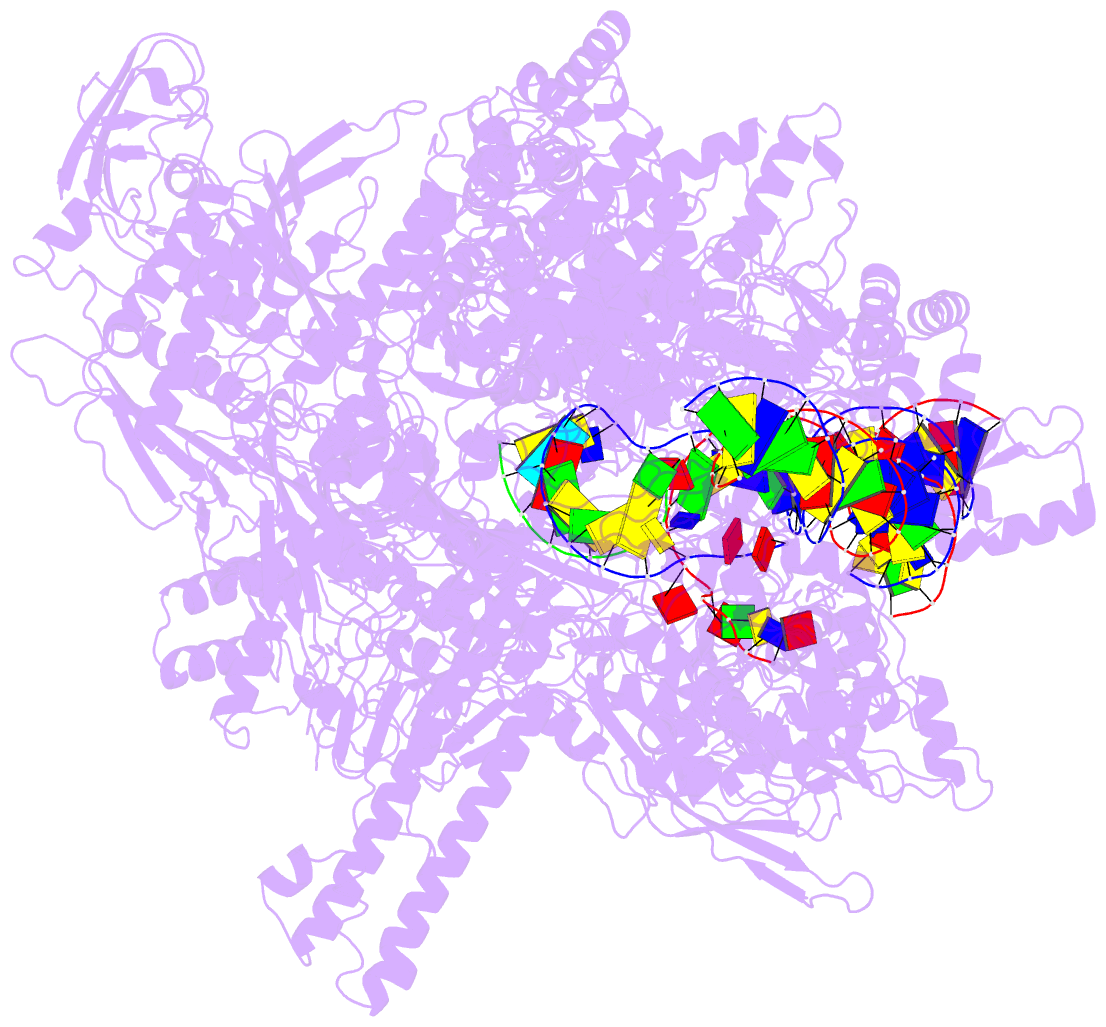Summary information and primary citation
- PDB-id
-
8ree;
SNAP-derived features in text and
JSON formats
- Class
- transcription
- Method
- cryo-EM (3.8 Å)
- Summary
- cryo-EM structure of bacterial RNA polymerase-sigma54
initial transcribing complex - 9nt complex
- Reference
-
Gao F, Ye F, Zhang B, Cronin N, Buck M, Zhang X (2024):
"Structural
basis of sigma 54 displacement and promoter escape in
bacterial transcription."
Proc.Natl.Acad.Sci.USA, 121,
e2309670120. doi: 10.1073/pnas.2309670120.
- Abstract
- Gene transcription is a fundamental cellular process
carried out by RNA polymerase (RNAP). Transcription
initiation is highly regulated, and in bacteria,
transcription initiation is mediated by sigma (σ) factors.
σ recruits RNAP to the promoter DNA region, located
upstream of the transcription start site (TSS) and
facilitates open complex formation, where double-stranded
DNA is opened up into a transcription bubble and template
strand DNA is positioned inside RNAP for initial RNA
synthesis. During initial transcription, RNAP remains bound
to σ and upstream DNA, presumably with an enlarging
transcription bubble. The release of RNAP from upstream DNA
is required for promoter escape and processive
transcription elongation. Bacteria sigma factors can be
broadly separated into two classes with the majority
belonging to the σ<sub>70</sub> class,
represented by the σ<sub>70</sub> that
regulates housekeeping genes. σ<sub>54</sub>
forms a class on its own and regulates stress response
genes. Extensive studies on σ<sub>70</sub> have
revealed the molecular mechanisms of the
σ<sub>70</sub> dependent process while how
σ<sub>54</sub> transitions from initial
transcription to elongation is currently unknown. Here, we
present a series of cryo-electron microscopy structures of
the RNAP-σ<sub>54</sub> initial transcribing
complexes with progressively longer RNA, which reveal
structural changes that lead to promoter escape. Our data
show that initially, the transcription bubble enlarges, DNA
strands scrunch, reducing the interactions between
σ<sub>54</sub> and DNA strands in the
transcription bubble. RNA extension and further DNA
scrunching help to release RNAP from
σ<sub>54</sub> and upstream DNA, enabling the
transition to elongation.





